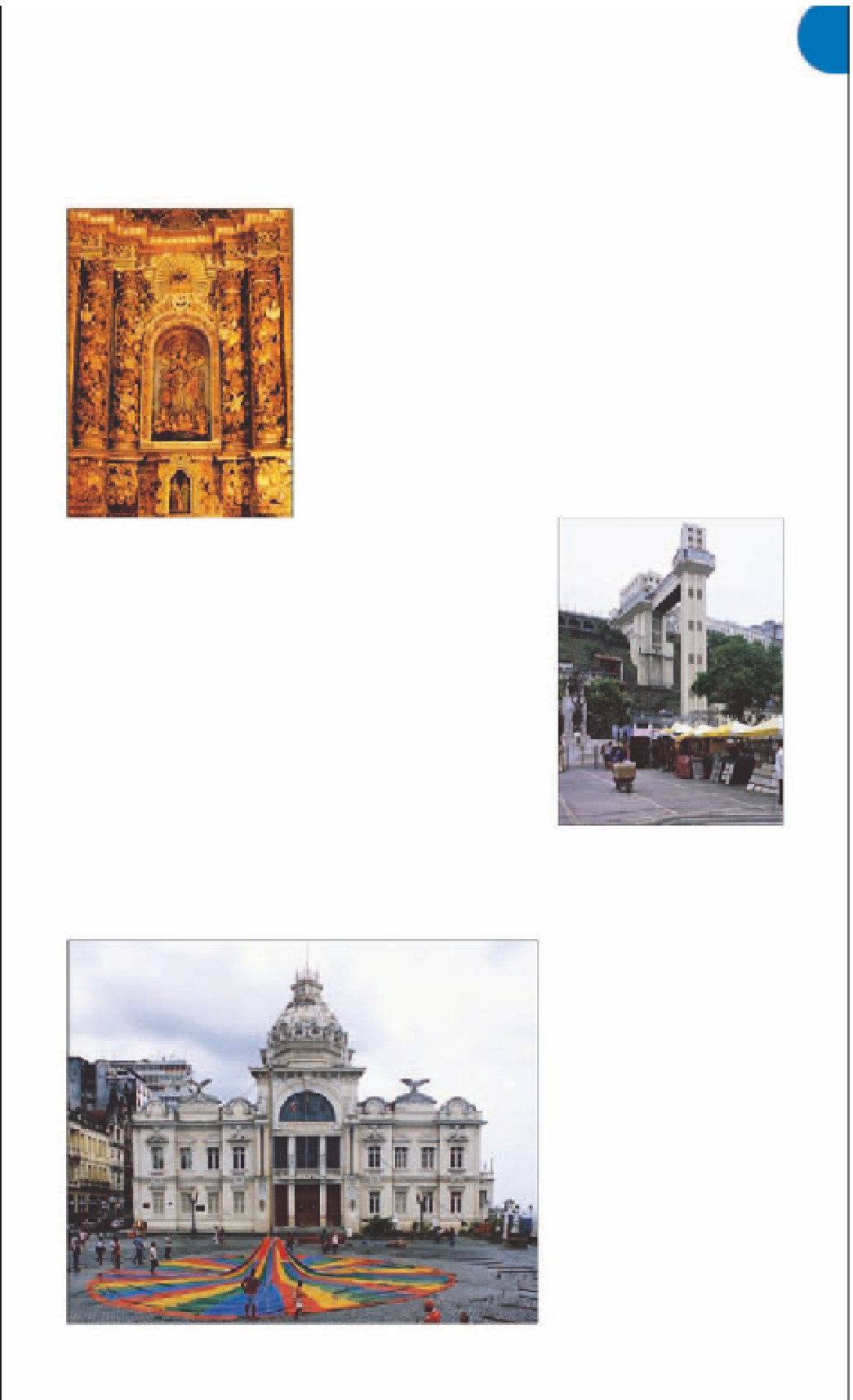Travel Reference
In-Depth Information
art. The collection includes
silver and gold religious arti-
facts such as chalices and
candleholders. The most
modern piece in the cathedral
is the powerful German organ
with more than 500 pipes, 18
registers, and two keyboards.
Praça Tomé de Sousa.
Renovations have added
fountains and benches, so
people can linger and enjoy
the
capoeira
presentations or
other cultural events often
held in the square. There is a
lookout point, the Belvedere,
on the north side of the
square which provides a
beautiful view of the Lower
City and the Baía de Todos os
Santos (Bay of All Saints).
Just to the left and down a
few steps from the Belvedere
is the
Memorial das Baianas
,
which pays homage to the
women who have become
such a symbol of Salvador.
The memorial shows and
explains the ceremonial
clothing and accessories worn
by Baianas
(see p177)
, and
often show-cases the works
of modern Bahian artists.
There are also photographs of
famous Baianas from the past.
1808, when the entire
Portuguese court relocated to
Rio de Janeiro in order to
escape Napoleon's invasion of
Portugal
(see p52)
. The build-
ing survived until 1900, when
the whole structure was
leveled and then rebuilt from
scratch in Renaissance style.
A fire in 1912 forced
another major overhaul, giv-
ing the building the eclectic
look it still has today. Used as
an official government build-
ing until 1979, the Palácio Rio
Branco was rededicated in
1986 as a cultural foundation,
the Centro Memoria da Bahia.
The former reception hall on
the ground floor now tells
the history of Bahia's 40
governors through paintings,
historic documents, and their
personal belongings.
Altar of Catedral Basílica, the main
cathedral of Salvador
Palácio Rio
Branco
8
Praça Tomé de Sousa s/n.
Tel
(071)
3116 6520.
#
9am-6pm Mon-Fri.
Igreja e Convento
de São Francisco
6
See pp190-91.
Praça da Sé
7
Memorial das Baianas
Praça da
Cruz Caida.
Tel
(071) 3222 9674.
#
9am-7pm daily.
The original Palácio Rio
Branco has nothing in
common with the building
that currently goes by that
name. The first palace was
built on this site in 1549 to
house Bahia's first governor,
Tomé de Sousa. The
Portuguese queen and later
the prince regent resided in
this palace temporarily in
Pelourinho's Praça da Sé
blends the modern with the
historic. The square is a
transition point between the
Terreiro de Jesus and the
Art Deco Elevador Lacerda with
market stalls below
Elevador Lacerda
9
Praça Tomé de Sousa s/n (Upper
City); Praça Visconde Cairu (Lower
City).
#
24 hrs daily.
&
7
Built by merchant Antônio
Francisco de Lacerda in 1873
from the original Jesuit-
installed manual pulley, the
famous Elevador Lacerda
connects Salvador's Upper
and Lower cities.
The Elevador Lacerda is
a popular site in Salvador,
used by more than 30,000
people daily. The elevator's
current Art Deco look dates
from a 1930s restoration. Four
elevators make the 236-ft
(72-m) trip up vertical shafts
in just 30 seconds, where the
view across the bay on a clear
day is simply stunning.
Preparations for a cultural show outside Palácio Rio Branco




































